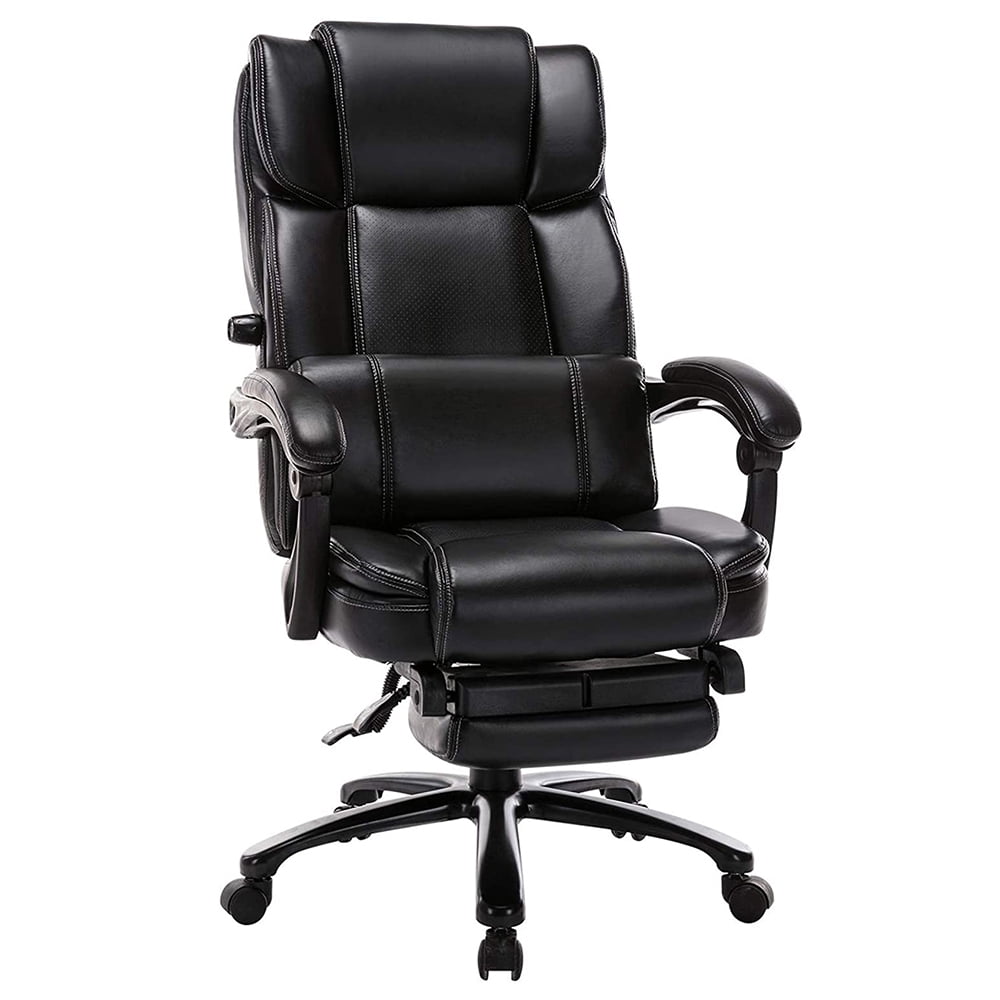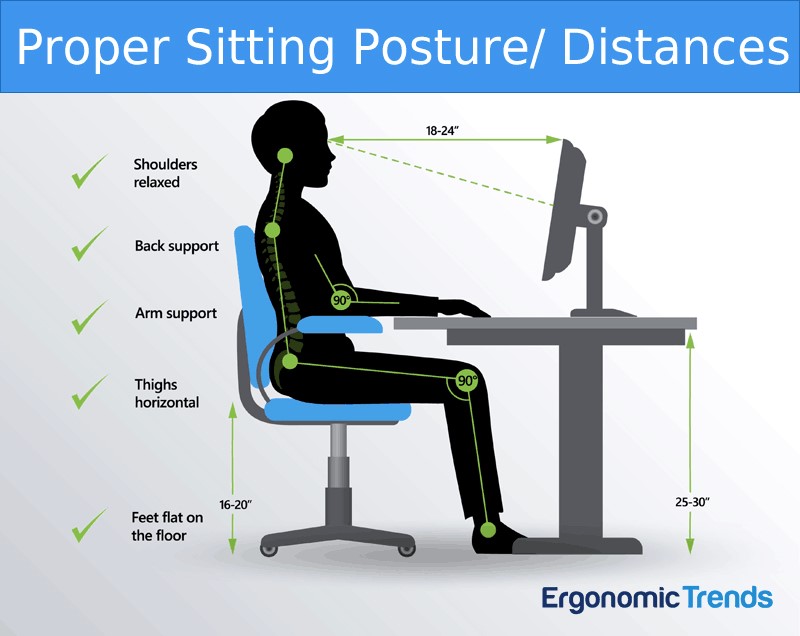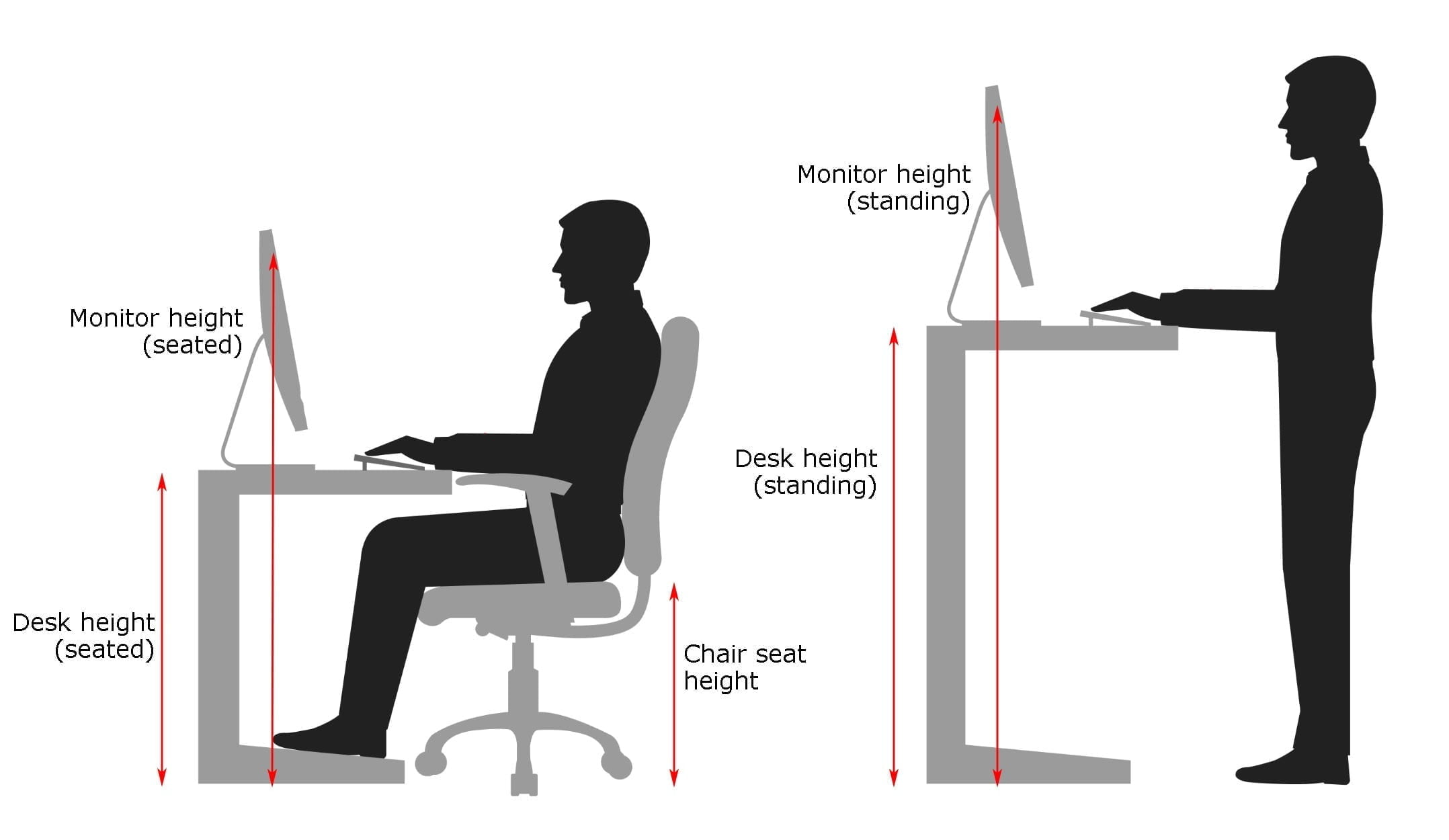Ergonomics and Health Benefits: Best Height For Office Chair

The perfect office chair height is not just about comfort; it’s about supporting your body’s natural alignment and preventing potential health problems. A correctly adjusted chair height can significantly impact your posture, back health, circulation, and overall well-being.
Posture and Back Health
The height of your office chair plays a crucial role in maintaining good posture. When your chair is at the right height, your feet are flat on the floor, your knees are bent at a 90-degree angle, and your back is supported by the chair’s backrest. This posture helps to distribute your weight evenly, reducing strain on your spine and preventing back pain. Conversely, a chair that is too high or too low can force your body into unnatural positions, leading to muscle imbalances, discomfort, and potential long-term back problems.
Circulation and Leg Comfort
Proper chair height also affects blood circulation in your legs. When your chair is too low, your legs are bent at an acute angle, which can restrict blood flow and lead to fatigue, numbness, and even swelling. On the other hand, a chair that is too high can cause your legs to dangle, which can also impede circulation and contribute to discomfort. The ideal chair height allows your legs to be comfortably positioned, promoting healthy blood flow and preventing circulatory issues.
Potential Risks of Incorrect Chair Height
Using a chair that is too high or too low can lead to various health problems.
- A chair that is too high can cause your shoulders to hunch, leading to neck pain, headaches, and upper back strain.
- A chair that is too low can strain your back muscles, leading to lower back pain and discomfort.
- Both too high and too low chair heights can cause discomfort in your legs and feet, leading to fatigue, numbness, and swelling.
- Prolonged use of an incorrectly adjusted chair can also contribute to carpal tunnel syndrome and other repetitive strain injuries.
Accommodating Different Body Types, Best height for office chair
The ideal chair height can vary depending on individual body types.
- Taller individuals may require a higher chair to achieve the correct posture and leg position.
- Shorter individuals may need a lower chair to ensure their feet are flat on the floor and their knees are bent at a 90-degree angle.
- Individuals with shorter legs may need a chair with adjustable seat height to accommodate their unique needs.
Factors Influencing Optimal Height

Finding the perfect chair height isn’t about hitting a specific number; it’s about achieving a harmonious balance between your body and your workspace. Several factors contribute to this perfect chair height, and understanding them is crucial for creating an ergonomic setup that supports your well-being.
Desk Height
Desk height plays a pivotal role in determining the ideal chair height. The goal is to maintain a 90-degree angle at your elbows when typing or using a mouse, with your forearms parallel to the floor. If your desk is too high, you’ll be reaching up, leading to shoulder and neck strain. Conversely, a desk that’s too low will force you to hunch over, putting pressure on your back and wrists.
Leg Length
Leg length is another crucial factor, as it influences the height of your seat relative to the floor. Ideally, your feet should be flat on the floor, with your knees slightly bent at a 90-degree angle. If your chair is too high, your legs will dangle, leading to discomfort and circulation issues. Conversely, if your chair is too low, you’ll be sitting with your knees higher than your hips, which can put strain on your lower back.
Personal Preferences
While desk height and leg length provide a starting point, personal preferences also play a significant role. Some people prefer a slightly higher chair to maintain better posture, while others prefer a lower chair for a more relaxed sitting position. Ultimately, the best chair height is the one that feels most comfortable and supportive for your individual body and work style.
Adjustable Chairs
Adjustable chairs are a godsend for achieving the optimal height. They allow you to fine-tune the seat height to match your desk, leg length, and personal preferences. This flexibility is essential for creating a truly ergonomic setup that caters to your unique needs.
Fixed Height Chairs vs. Adjustable Chairs
While fixed height chairs offer a sense of simplicity and affordability, they lack the adaptability of adjustable chairs. If your desk height or leg length changes, or if you simply prefer a different sitting position, a fixed height chair won’t accommodate your needs. Adjustable chairs, on the other hand, offer the freedom to adjust the seat height to suit your individual requirements, promoting optimal comfort and ergonomics.
Recommended Chair Heights for Different Desk Heights
| Desk Height (inches) | Recommended Chair Height (inches) |
|—|—|
| 28 | 18 |
| 29 | 19 |
| 30 | 20 |
| 31 | 21 |
| 32 | 22 |
Remember, these are just guidelines. The best chair height for you will depend on your individual body and work style. Experiment with different heights until you find the one that feels most comfortable and supportive.
Practical Tips and Recommendations

Finding the perfect chair height is like finding the perfect pair of jeans – it’s all about the right fit. But unlike jeans, the right chair height can significantly impact your comfort, posture, and overall health. So, let’s dive into some practical tips and recommendations to help you find your sweet spot.
Determining Ideal Chair Height
To determine the ideal chair height, we recommend following a simple, step-by-step guide.
- Start with your feet flat on the floor. This ensures your legs are at a 90-degree angle, which promotes good circulation and prevents strain on your back and legs.
- Adjust your chair height so that your thighs are parallel to the floor. This position ensures proper alignment of your spine and reduces pressure on your lower back.
- Check your arm position. Your elbows should be bent at a 90-degree angle when your forearms are resting on your desk. If your elbows are too high or too low, you may need to adjust your chair or desk height.
- Take a test drive. Once you’ve adjusted your chair, sit for a few minutes and see how you feel. Make any necessary adjustments until you find a comfortable position.
Adjusting Chair Height for Different Tasks
While the ideal chair height is generally the same for most tasks, some adjustments might be necessary depending on what you’re doing.
- For typing and computer work, you’ll likely want your chair height to be slightly lower to ensure your wrists are in a neutral position.
- For meetings or conference calls, you may want to raise your chair slightly to improve your posture and eye contact.
- For creative tasks, you may want to experiment with different chair heights to find a position that promotes comfort and productivity.
Finding the Right Chair Height for Different Work Environments
The optimal chair height can vary depending on your work environment.
- Home offices: You have the luxury of adjusting your desk and chair to your liking. Make sure you have enough space to move around and stretch comfortably.
- Open spaces: In open-plan offices, you may need to consider the height of your desk and the position of your computer screen. Make sure your chair height allows you to comfortably reach your keyboard and monitor without straining your neck or back.
- Conference rooms: Conference room chairs are often fixed, so you may not have the option to adjust the height. If possible, try to choose a chair that is comfortable for you, or bring a small cushion to adjust the height if needed.
Common Mistakes to Avoid
Adjusting your chair height can be tricky, and even the most well-intentioned efforts can sometimes lead to mistakes. Here are a few common mistakes to avoid:
- Ignoring your posture: Don’t just sit down and forget about your posture. Make sure you’re sitting upright with your shoulders relaxed and your back straight. If you’re slouching, you’re putting unnecessary strain on your back and neck.
- Adjusting your chair too high: A chair that is too high can make it difficult to reach your keyboard and mouse, leading to strain on your shoulders and wrists. It can also put pressure on your thighs and lower back.
- Adjusting your chair too low: A chair that is too low can cause your knees to be higher than your hips, which can put pressure on your knees and lower back. It can also make it difficult to get up from your chair.
- Not adjusting your chair throughout the day: As you move throughout the day, you may need to adjust your chair height to maintain good posture. For example, you may need to raise your chair slightly when you’re standing up to reach something or lower it when you’re sitting down to work on your computer.
Best height for office chair – Finding the best height for your office chair is crucial, especially if you’re a desk warrior like me. But let’s be real, sometimes you need a throne fit for a gaming king, and that’s where a good gaming chair comes in.
If you’re looking for the best way to keep your back healthy while slaying virtual dragons, check out this guide on finding the best gaming chair for your back. And remember, a good chair, whether it’s for work or play, can make all the difference in your comfort and productivity.
Finding the perfect height for your office chair is like finding the perfect cup of coffee – it’s all about personal preference. But if you’re looking for a more casual and comfy alternative, maybe check out the best bean bag chair with removable cover for your home office.
Beanbags are great for lounging, but for a more focused work session, a good office chair will always be the better choice.